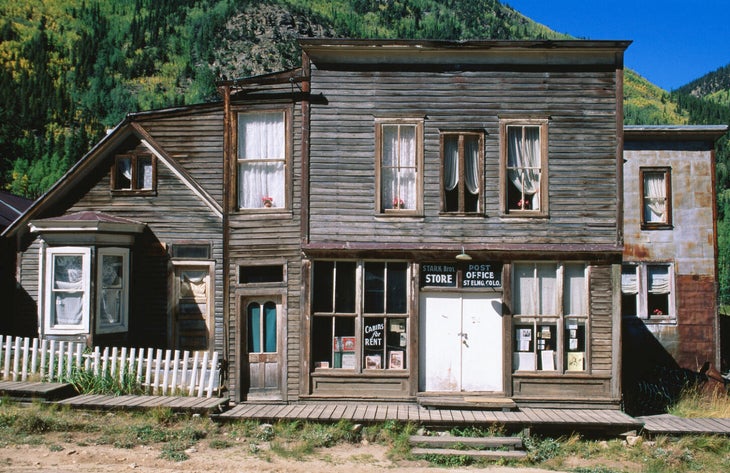Products You May Like
Get full access to Outside Learn, our online education hub featuring in-depth fitness, nutrition, and adventure courses and more than 2,000 instructional videos when you sign up for Outside+
Sign up for Outside+ today.
Figuring out how to efficiently fuel your body on a long-distance hike can be a complex task. It seems simple enough during everyday life, when you can walk to the fridge if you’re feeling peckish or drive to Taco Bell and immediately satisfy your fast-food craving. But, having enough appetizing and nourishing food is no easy task when you’re hiking far from town and burning more calories than you ever thought possible.
Some thru-hikers live on gas station candy bars and trail mix. Others spend months dutifully crafting resupply boxes for each trail town. There’s no right or wrong way to approach food strategies, but there is a lot to consider before you step foot on the trail or commit to buying dozens of Mountain House meals. To help plan your long-distance trip, we talked to a few thru-hiking experts about what worked—and what didn’t—on their journeys.
Strategy 1: Instant Noodles, Candy Bars, and Grocery Stores
Often, the simplest way to resupply is the one that mirrors your daily life—grocery shopping in town. “On a thru-hike, you get so hungry that shopping for food becomes its own reward,” says Bruce Etter, Appalachian Trail and Pacific Crest Trail veteran. He usually resupplied with what he found in the closest supermarket. Staples on his hikes included Knorr sides, peanut butter, summer sausage, tortillas, and Tabasco sauce: “Throughout my hike, I got so tired of certain flavors and foods that I relied on too often. I really appreciated that I could switch things up each time I resupplied.”
The obvious disadvantage of relying on grocery stores is that small trailside towns can have limited selections, and it can be more expensive than shopping at home or in bulk. Even if you plan to resupply on the fly, Etter suggests doing a bit of trail town research using a guidebook or Google. “I’ve definitely gotten myself into situations where I’m trying to find five days of food in a gas station,” he says. “If you can plan ahead to avoid a town like that or arrange a mail drop, you’ll be better off.”

Strategy 2: Freeze-Dried Meals and the Post Office
With proper planning, mailing food to yourself can be a way to ensure you have access to food you enjoy and reduce your “town chores” when you get off-trail or have a zero day. Though he only had a few weeks to plan his trip, Miquel Ramirez arranged a number of mail drops—packages that he mailed to himself to be held at trail town post offices—to be his primary food resupply on his Arizona Trail thru-hike. Because he works as a wildland firefighter, Ramirez says he was confident that he knew what food to bring to fuel a long trip. He relied on things like freeze-dried meals and his favorite brands of energy bars, which might not have been available in local grocery stores.
Ramirez also mentions that, for mail drops, hiker hostels, motels, and gear stores could be more convenient than the local post office. Although most small towns do have post offices, they are closed on Sundays and often have shorter operating hours than local businesses do.
“I ‘Sundayed’ myself twice on the Arizona Trail,” says Ramirez, referring to occasions where he was forced to take an unplanned day off because he had arrived in town on a Sunday and the post office was closed. “If you’re on a strict timeline or going for an FKT, that could be a real issue.”

Strategy 3: Home-Cooked Meals and a Food Dehydrator
Of all the options to arrange resupplies, dehydrating your own food is likely the most intimidating. According to hikers who have used this method, though, it has some serious benefits.
“I knew from experience that I didn’t want to rely on sugary and unhealthy foods,” says Matt Tock, a PCT section-hiker. “In the meals I cooked, I used a lot of whole grains and tried to maximize good calories.”
Tock does warn that the process of dehydrating food for a long hike can be a serious investment of time and money. First, there’s the dehydrator itself: a quality unit can cost several hundred dollars. Then, there’s the time it takes to cook, dehydrate, and then test your meals, which can feel like a full-time job. On top of that, you have to coordinate your mail drops, too. On the trail, Tock also ran into issues with a few recipes, like his dehydrated pad Thai, which didn’t taste great and was nearly impossible to rehydrate and cook over his small alcohol stove. Other meals, like a tried-and-true spaghetti recipe, were great. The process of dehydrating your own meals can take a lot of trial-and-error, but if you want to customize your menu or make everything a bit healthier, it’s so worth it.
Strategy 4: All of the Above
Rather than choosing one strategy and sticking to it, many hikers will adopt the method that makes the most sense situationally by doing a bit of research ahead of time. For Ramirez, his AZT hike made him rethink how he would tackle another thru-hike. “I planned out mail drops for the entire trip, but if I did it again, I would probably plan to shop in stores for half of my resupplies.” He says the number of towns with quality stores surprised him, as he was often craving foods that weren’t in his resupply box. At the beginning of his hike, before his thru-hiker appetite had kicked in, he says he mailed himself too much food. “I ended up with almost five pounds of food I didn’t even want. I could have prevented that by shopping as I went.”
On the other hand, Etter says that even though he prefers to resupply from grocery stores, he would do food drops in towns where he was also mailing himself gear. “If you know you’re already heading to the post office, having a food box waiting for you as well can make a day in town a bit more relaxing.”
